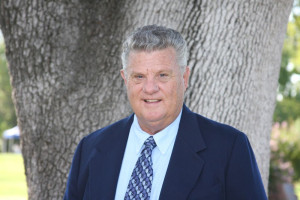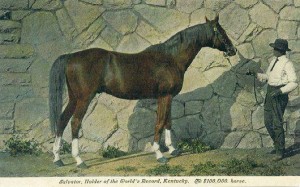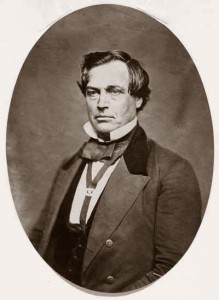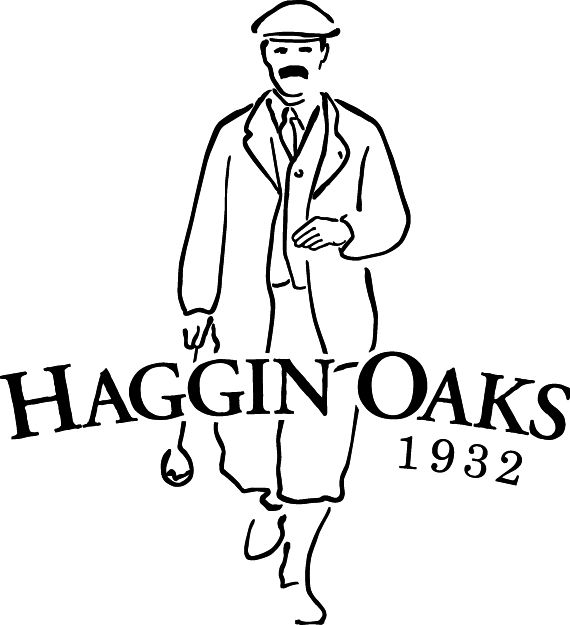 Today’s blog entry is brought to us by Ken Morton, Sr, Morton Golf’s CEO.
Today’s blog entry is brought to us by Ken Morton, Sr, Morton Golf’s CEO.
On December 20th, 1844, Rancho del Paso, a ranch of over 44,000 acres sold to Eliah Grimes and John Sinclair. This land grant was the first colonist settlement in the Sacramento Valley. The only other settlement at that time was granted by Governor Manual Micheltorena, who was governor of The Department of California, which in 1844 was still under Mexican rule. The name of this great ranchland is of historical significance. Rancho del Paso literally means “The Ranch of the Pass” because the road leading Emigrant Gap Pass in the Sierra Nevada crossed diagonally through the Rancho. The hardy settlers of the 1840s and 1850s used this deeply rutted wagon road as they came west.
After this period of time, Rancho del Paso changed hands several times and finally in 1859 became the property of James Ben Ali Haggin and his brother-in-law Lloyd Tevis. JB Haggin was born on December 9th, 1822, in Harrodsburg, Kentucky. Haggin’s reputation included being one of the most successful mining men of the country. He also became internationally renowned as a breeder of fine racing stock, was one of the foremost dairymen of his time and his beautiful estate that he built in Lexington, Kentucky attracted visitors from all over the world. Haggin originally grazed sheep over the wide acreage at the Rancho, which abounded in antelope, deer, elk and grizzly bears. Over the next few years, farming and cattle ranching on the land became more extensive but Haggin realized that the Sacramento climate was perfect for thoroughbred breeding and racing. So Haggin and the Rancho del Paso began shifting from a typical ranch to a world famous breeding and training ground for thoroughbreds. In 1873, Haggin hired John Mackay, who owned a stable of trotters behind the Golden Eagle Hotel at 7th and K Streets to run Rancho del Paso. Mackay was an expert trainer and for the next 30 years his knowledge, coupled with Haggin’s wealth created the incredible success “The Rancho” turned out to be.
Mackay supervised an immense operation. The ranch was divided into two sections, each having different functions. The “Arcade Section” included Haggin’s railroad terminal located on what is now the intersection of Marconi Avenue and Auburn Blvd. He arranged to have Southern Pacific cross his property so that he had a place on his ranch to serve as his shipping center for horses, featuring twenty-four barns, each of which could hold sixty-four stalls.
The other section was called “The Bottom” which was near the American River in the area of Watt Avenue and Arden Way. Here the most valuable thoroughbreds were kept on about 10,00 acres of paddocks.
The Rancho also included a regulation mile race track and its own specially designed railroad cars which were used for transporting the horses to New York for auction. At its peak, Rancho del Paso employed over 100 people and had more than 600 thoroughbreds.
In 1891, “The Rancho del Paso Land Company” was incorporated by Haggin and he began selling acreage to the Sacramento Valley Colonization Company for subdivision purposes. The transfer of the deed took place December 22, 1910, a year after he died at the age of 91, and later the sale of 148.34 acres was sold to the Del Paso Country Club in 1916. During the turn of the century, the horse racing industry suffered a decline and in 1905, Haggin discontinued breeding thoroughbreds for a stock farm for cattle.
In 1897, he returned to Kentucky and purchased the Elmendorf Farm, owned by Daniel Swigert. The house he built on Elmendorf Farm was viewed as one of the finest residences in Kentucky and became one of the most noted estates in America and the horses he raced became legendary throughout the United States and England. Today, Kentucky is largely indebted to JB Haggin for the fame of its racing stock.
 In 2010, I visited Ben Haggin, the great-grandson of JB Haggin in Lexington and we shared stories as he took me through the horse ranch and stables of Elmendorf Farm. It was an amazing day for me to personally rub the noses of some of the breeding stock of past Kentucky Derby and Belmont Winners at Elmendorf Farm. For the record, JB Haggin purchased a horse called Salvator and in 1890, Salvator broke the American and World Record by nearly four full seconds. It took another 28 years for that record to eventually be broken. Other famous horses owned by Haggin were Firenze who went on to become a member of the Hall of Fame at the National Museum of Racing and Haggin also owned another horse called Ben Ali that won the 1886 Kentucky Derby.
In 2010, I visited Ben Haggin, the great-grandson of JB Haggin in Lexington and we shared stories as he took me through the horse ranch and stables of Elmendorf Farm. It was an amazing day for me to personally rub the noses of some of the breeding stock of past Kentucky Derby and Belmont Winners at Elmendorf Farm. For the record, JB Haggin purchased a horse called Salvator and in 1890, Salvator broke the American and World Record by nearly four full seconds. It took another 28 years for that record to eventually be broken. Other famous horses owned by Haggin were Firenze who went on to become a member of the Hall of Fame at the National Museum of Racing and Haggin also owned another horse called Ben Ali that won the 1886 Kentucky Derby.
 There was plenty of tragedy on the Haggin Ranch. On August 2nd, 1852, there was the famous rifles at 30 paces duel between James W. Denver (then State Senator representing the Trinity and Klamath Counties) and Edward Gilbert (Editor in Chief of the Alta California Newspaper). The duel took place near the Oak Grove House where the two duelers had breakfast on the morning of the tragedy. Denver shot and killed Gilbert and went on to become the Secretary of State under John Bigler. He resigned in 1855 and became a member of Congress from 1855 to 1857; and was later appointed by the governor of the territory of Kansas by President James Buchanan. He died in 1894 regretting the duel to his grave. The city of Denver is named after James W. Denver.
There was plenty of tragedy on the Haggin Ranch. On August 2nd, 1852, there was the famous rifles at 30 paces duel between James W. Denver (then State Senator representing the Trinity and Klamath Counties) and Edward Gilbert (Editor in Chief of the Alta California Newspaper). The duel took place near the Oak Grove House where the two duelers had breakfast on the morning of the tragedy. Denver shot and killed Gilbert and went on to become the Secretary of State under John Bigler. He resigned in 1855 and became a member of Congress from 1855 to 1857; and was later appointed by the governor of the territory of Kansas by President James Buchanan. He died in 1894 regretting the duel to his grave. The city of Denver is named after James W. Denver.
Another duel took place between Phillip W. Thomas and Dr. Dickson on March 9th, 1854. The weapons were dueling pistols and the distance was 15 paces. Dickson fell to his death. Thomas was later elected District Attorney of Placer Country and in 1860 was elected as State Senator. It was said that Thomas was never the same man after this event.
A third duel in 1855 took place between Robert Tevis, a young lawyer and brother of Lloyd Tevis, and Charles Lippincott, a State Senator from Yuba County. In a roast in Downieville, Lippincott roasted Tevis in a manner that offended him. They set a date for a duel that caused great excitement because both parties were prominent and distinguished. Ultimately, the duel cost Tevis his life.


7 Comments